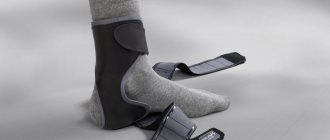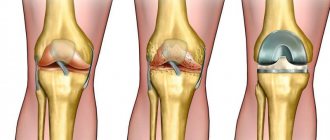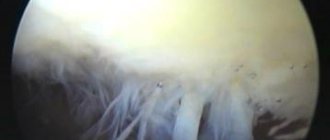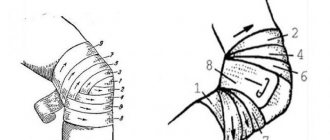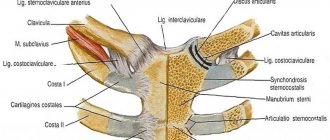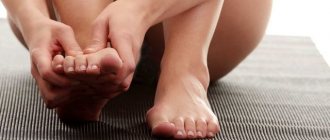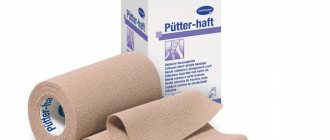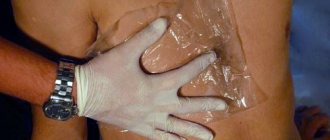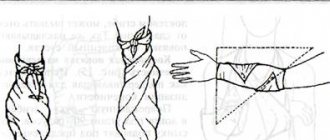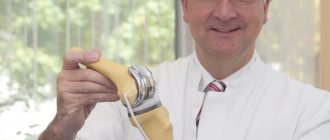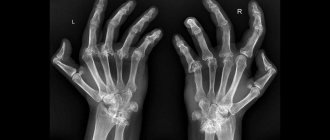The biological task assigned by nature to the knee joint is to support body weight and absorb walking, running and lifting heavy objects. Unusual and sudden load: squats with weights, falls or a sharp side blow to the knee, displace the femur and tibia relative to each other. This leads to dislocation or fracture of the knee , provokes sprain or rupture of ligaments.
The best way to prevent knee injury is to apply an elastic bandage to the joint before sports training or any other activity. A medical bandage fixes the joint, preventing dislocation, and relieves muscles and ligaments . An elastic bandage allows an athlete to “take” more weight, run faster and longer, jump higher and easier.
Why are fixing bandages needed?
Correctly applying an elastic bandage for sprains is also necessary during the rehabilitation period after an injury. Wearing a bandage for medicinal purposes reliably protects the damaged part of the body ; it is not recommended to remove it until the joint, muscles and other tissues are completely restored. Beginning athletes can use a support or fixing bandage for prevention.
Elastic bandages will be needed after arthroscopy and for the following conditions:
- varicose veins,
- arthrosis,
- swelling after surgery,
- sclerotherapy,
- lymphedema,
- thrombosis,
- venous insufficiency,
- postphlebitis disease,
- postthrombotic disease,
- for preventive purposes during pregnancy.
How to treat osteoarthritis of the knee joint?
Find out what neoarthrosis is.
What is a splint and what is it for?
The modern brace is a lightweight and durable detachable bandage for immobilizing the knee. It allows you to step on your foot, but completely eliminates movement in the joint. The lower leg and thigh are stabilized by durable metal or thick plastic plates.
A splint is prescribed in cases where it is possible to step on the leg after an injury. Typically, the period of use of the product does not exceed several weeks. If the treatment requires a longer period, it is no longer splints that are indicated, but special functional orthoses.
Bandaging
Elastic bandages are relatively new; before them, woven materials were used that could be thin or thick, they were diapers and narrow strips.
Woven materials were replaced by knitted bandages; patients noted that this type was more convenient: after all, it was possible to regulate the pressure that the bandage exerted on the sore spot. The art of bandaging is the subject of study of the science of desmurgy.
Elastic bandages designed for repeated use are complex products. Modern technologies are used in production; latex or other elastic thread is twisted with synthetic or cotton thread in one or two layers. The elastic knee bandage is made from just such threads.
Elastic bandages vary in degree of elongation, length and width, depending on the parameters they are used in different situations.
How to massage the knee joint with arthrosis?
Low-elastic bandages
This type is used to fix medications. It is recommended for use when the patient has post-thrombotic abnormalities or suffers from venous insufficiency; low-elastic products are effective for varicose veins, thrombosis or emphyedema. They are capable of stretching up to 69%.
Medium elastic bandages
Products with medium elasticity stretch 1.5 times. They allow you to get a good healing effect after the plaster is removed. They are used in the treatment of venous insufficiency, varicose veins, postphlebitis or trophic syndrome, as well as after surgery on blood vessels.
Highly elastic bandages
Products with high elasticity stretch more than 1.5 times. Bandages are used when hematomas form or swelling appears after surgery.
Such bandages make it possible to reduce the load after surgery. They are applied in the post-traumatic period, during sports training and during gestation.
How to use tourmaline knee pads?
Tortoise knee bandage
In everyday life, you often need to know how to bandage your knee using an elastic bandage. Look at the diagram on how to correctly apply a turtle bandage, which can be converging or diverging.
When is an orthosis prescribed?
It is allowed to wear an orthosis strictly as prescribed by the attending physician. Orthopedic bandages are used to prevent knee damage, accelerate the restoration of joint functionality after injury, and treat diseases of the musculoskeletal system.
Indications for the use of a knee orthosis:
- Damage to the external or internal meniscus in the knee area;
- Patella displacement;
- Sprain or injury to the collateral and cruciate ligaments;
- Arthritis (development of the inflammatory process) and arthrosis (chronic disease);
- Restoring knee function after illnesses and injuries;
- Prevention of joint damage during regular sports training, heavy physical activity, etc.
The main contraindications to the use of an orthosis are a violation of the circulatory system, severe swelling of the leg, inflammatory processes on the skin, dermatitis. For varicose veins, it is allowed to wear retainers after medical consultation. The doctor studies the patient’s medical history, compares the positive and negative effects of using the bandage, and assesses the risks. The doctor additionally prescribes special compression garments to prevent the development and progression of varicose veins.
Orthoses are strictly prohibited for thrombophlebitis (thrombosis with an inflammatory process on the walls of the vein and the formation of a blood clot that closes its lumen). Do not wear a bandage on injured skin (wounds, cuts, burns). It is prohibited to wear a medical device for skin diseases directly located on the leg. You must immediately stop wearing the orthosis if you experience an allergic reaction to the materials from which the medical device is made.
How to apply a converging bandage
An orthopedic bandage greatly facilitates the patient's position. The tortoiseshell bandage provides optimal fixation of the bandage compared to other types of bandage. A bandage is applied to the areas surrounding the injured or diseased joint.
This bandage goes in circular motions on both sides of the knee joint: below and above.
To perform the technique, you need to relax your leg and bend it slightly. Fastening turns are made in the middle of the shin; to do this, you need to go down 15 cm from the kneecap. To secure the bandage, roll it on the surface of the knee from behind, directing it obliquely upward onto the thigh. It is necessary to complete a full circle, after which the transition to the lower leg is made using a cross from behind.
Circles with a bandage should be repeated at least 5 times to achieve the desired effect - complete convergence in the kneecap area. After the first circle of the bandage, the subsequent ones are performed in such a way as to cover the previous ones by half. After fixing the elastic material, you need to observe how the toes on the sore foot look. It is important that the bandage is not too tight.
Important. The sliding turtle bandage provides strong fixation of the elastic material; if it is applied correctly, it is possible to completely immobilize the powerful joint.
Purpose of wearing the product
The orthosis is prescribed by an orthopedic doctor after examining the patient, collecting an anamnesis, and making a diagnosis. The device is used to prevent knee injuries and treat damaged joints.
Functions of knee orthoses:
- Full or partial fixation of the articular apparatus;
- Removing excess load from the knee;
- Correction of the correct position of the joint.
Fixation of the knee joint with an orthosis helps improve the functionality of the joint, stop or significantly slow down the development of pathologies during therapy and restoration of the musculoskeletal system. Wearing a brace prevents re-injury of the knee after surgery.
An orthopedic product is selected separately for each patient. The bandage must be selected in size and not cause allergic reactions or discomfort.
How to apply a dilapidated bandage
A person who provides assistance to a victim of a knee injury must know exactly what kind of bandage is used for damage to the knee joint.
The divergent one is applied directly to the injured area. Circular tours are carried out around the middle of the knee joint.
Turtle wrap can be applied to the victims themselves. In some cases, it is part of a complete bandage for the entire limb. The crossing should be done on the back of the knee.
Before starting the procedure, the leg needs to be straightened and relaxed. The bandage is wrapped around the kneecap in the middle for 2 turns, all subsequent circles are made higher and lower, the width of the previous circles overlaps by half.
Important. After completing 5 moves, the bandage is secured. Pay attention to how you feel in your leg; if you feel severe discomfort, goosebumps run under the skin, the pressure is relieved.
If the bandage has lost its elasticity, it is not recommended to use it; the bandage will fall off. The material for fixation cannot be strongly shaken; it should be stretched evenly during the procedure.
Sizing
When selecting a knee orthosis, the individual anatomical features of the leg structure are taken into account. Most devices are equipped with special lacing and Velcro fasteners so that the design can be adjusted to the required parameters. But due to limited adjustment options, you will need to calculate the size of the medical bandage before purchasing.
What measurements need to be taken:
- Knee circumference in the middle;
- Thigh circumference at a distance of 10 cm from the middle of the knee pad (the interval may vary depending on the brand of the orthosis);
- Leg circumference at a distance of 10 cm below the middle of the knee pad.
With the correct size, you will be able to achieve a positive result when wearing an orthosis. The size chart of orthopedic devices includes XS (children's version), S, M, L, XL.
An orthosis with hinges on the outside is much larger than on the inside. To select the device correctly, you need to take measurements on the inside. Similar rules are observed when purchasing a device with stiffeners.
Human knee joint
The knee joint, from an anatomical point of view, is a rather complex organ. It is characterized by increased mobility, unbending from 90 to 180 degrees when walking. The human knee joint is formed by joining two large bones, the tibia and the femur, in a synovial capsule. The femur is considered to be the largest element of the human skeleton. Thanks to it, muscle mass is retained and a person walks on two legs. The knee joint consists of the following elements:
bones. They reduce the force of friction between the main bones and are considered shock absorbers that soften shock loads on the legs.
Tubular- Menisci . Act as biochemical gaskets. Promotes proper distribution of body weight on the tibia. This increases joint stability.
- Ligaments . With their help, bones are connected. Responsible for providing control of knee movement.
- Muscles . Thanks to them, the dynamics of the knee and the synergizing capsule are stable. The knee lock or quadriceps muscle must be constantly toned. Weakening of this muscle leads to the development of diseases.
- Nerves . They are important parts of the sciatic nerve. Injury to the sciatic nerve is accompanied by severe pain.
- Blood vessels . The ankle and knee are enriched with blood thanks to the popliteal artery and vein.
Injury to any element of the knee part of the limb leads to deterioration of musculoskeletal function.
How to properly apply a compression bandage for knee arthrosis?
To fix the knee with arthrosis, use a low-tensile bandage (stretches by 50% of the length at rest) 1.5-2 m long and 8-10 cm wide. 1. Apply the bandage in the morning, when swelling and inflammation are minimal. 2. Secure the bandage with 1-2 turns 20 cm below the knee. Apply the bandage so that the new wrap overlaps the previous one by 2/3 of the width. 3. Pass the bandage obliquely through the popliteal fossa, place it on the thigh, twenty centimeters above the joint. Secure the bandage with 1-2 turns. 4. Pass the bandage from top to bottom so that the new wrap of the bandage crosses the previous one obliquely. A cross of bandage strips should form in the popliteal area. Secure the bandage with 1-2 turns under the knee. 5. When you have completely bandaged your knee, secure the bandage with a turn of the bandage through the middle of the knee. Secure the bandage using the clip that is included with the Intex bandage.
Published in the Bandages sectionReferences:
- https://travmoved.com/preparat/elastichnyj-bint-na-koleno/
- https://prokoleni.ru/med/elastichnyiy-bint-na-koleno
- https://bint.ru/blog/artroz-kolennogo-sustava-i-elastichnyj-bint/
In what cases should this remedy be used?
Dressing material is used in different situations. Typically, this material is a preventive measure for knee injury or impairment. However, there are other cases where elastic bandages are used. Of course, the decision about the need to apply a bandage is made by the doctor. This remedy is prescribed in the following cases:
- orthopedic diseases;
- swelling;
- sports injuries;
- thrombophlebitis;
- bruises and dislocations.
The doctor recommends applying bandages not only for injuries, but also for various diseases (arthrosis, arthritis, synovitis). They can be inflammatory and non-inflammatory. Bandages help relieve or reduce pain and reduce stress on the knees.
Contraindications to applying a bandage
Is it always possible to do dressings? No, there are cases when applying a bandage is prohibited. The final decision on the possibility or impossibility of such a procedure is made by the doctor. But in the following cases you definitely can’t bandage:
- diabetes;
- obliteration of arteries, atherosclerosis;
- infection at the site of application;
- inflammation in the area where the bandage is applied.
Read about how to apply a compress here.
In addition, some side effects may occur during use. For example, in summer it is very hot in such headbands. Consequently, skin problems may arise. It is possible to be allergic to substances contained in the bandage. And the bandage exerts excessive pressure not only on the joint, but also on the surrounding tissues, which can also lead to negative consequences.
Such bandages are a fairly effective means of relieving knee pain and reducing stress. However, you should not get carried away with this method of treatment, and even more so, you should not use an elastic bandage as the main treatment. An integrated approach to the treatment of a disease or injury will lead to a quick cure and reduce the risk of complications.
Magnetic joint bandages
Magnetic joint bandages are used as an element of physiotherapy in the treatment of joints. The magnetic field helps speed up wound healing processes, relieve inflammation and pain, and restores impaired blood circulation. Magnetic bandages help treat arthrosis, arthritis, bursitis or injuries of joints and tendons.
Such options for fixation with a magnet are done both in a medical facility and at home. Fixing agents with a magnet can be purchased at specialized salons or at a pharmacy. The product often already has fasteners that are convenient for securing it to the knee or other part of the body.
Magnetic joint bandages
